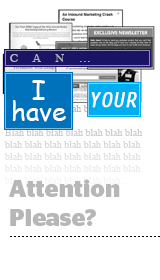 Impressions don’t impress – “Attention is the key, not just being on the screen,” said Moat CEO and co-founder Jonah Goodhart at an event Wednesday about time-based metrics hosted by Parsec (formerly Sled Mobile).
Impressions don’t impress – “Attention is the key, not just being on the screen,” said Moat CEO and co-founder Jonah Goodhart at an event Wednesday about time-based metrics hosted by Parsec (formerly Sled Mobile).
That’s part of why advertisers buy TV – it’s a viewable playground for branding.
But viewability, after all, is just a baseline for just showing up, not the be-all and end-all, said Daniel Rothman, director of insight at the Financial Times, which has been experimenting with a cost-per-time model on its website for the last 16 months.
“Viewability on its own just looks at ad placements – is the ad viewable on the screen? It does not address the performance of those impressions or any quality metrics,” Rothman said.
Transacting on impressions doesn’t make sense, Rothman said, because it values and prices each impression equally regardless of exposure time as long as it hits the minimum threshold for viewability – 50% of pixels in view for one second for display and two seconds for video. Same goes for mobile.
“But maybe the longer your brand advertising is in view, the greater the impact your creative would have on our audience,” Rothman said. “It’s not rocket science, but we thought this could really make a difference.”
From the summer through the fall of 2014, FT embarked on a study with five large brand clients to measure the impact on traditional brand recall metrics of time spent engaging with ads.
Using Millward Brown to quantify the results, FT found that when active users were served 100% viewable ads for five seconds or more, brand lift increased by 79%, while familiarity went up by 55%, brand association grew by 51% and brand consideration saw a 58% boost.
“We’ve demonstrated that the length of time an active user is exposed on ft.com has a meaningful impact on their brand perceptions,” Rothman said.
But although a number of FT’s brand clients have renewed their cost-per-time campaigns, buying on time is still the exception rather than the rule, partially because though the buy side understands the value in the concept, their legacy systems aren’t built to handle it.
“We wouldn’t be buying on time – we’re just not structured to do that yet,” said Matt Seiler, former global CEO and current chairman of IPG Mediabrands.
The agency compensation model is one major stumbling block, he said. Agencies get paid based on how many dollars get spent, not necessarily based on ROI.
Essentially that means, “we’re not trying to correlate advertising with effectiveness,” said Seiler, noting that “some fairly fundamental things have to happen” before cost per time is embraced by more than the vanguard.
One of those things is to figure out what people actually want to spend their time with rather than forcing them to sit through something like “the countdown torture of a pre-roll,” Seiler said. “It has to be distribution and content working together.”
Although looking more closely at ROI would be a positive step from an advertiser’s point of view, users don’t really care about whether there’s been a return on investment, said Joe Marchese, president of advanced advertising at Fox. They just want value in exchange for their time.
A letter from all consumers to the entire ad industry could go something like this, Marchese quipped: “Dear marketers, your ROI is not my problem.”
“If you borrow my attention, the market clearing price of an ad should be the cost of attention,” he said.
But Bruce Kiernan, practice lead for performance marketing at MEC North America, isn’t convinced that it’s time just yet to “throw the baby out with the bathwater and just focus on premium.”
“I don’t think we should carve out supply that only works toward metrics like time spent. There are just so many variables and too much variance in experience with ads and no good way to predict what will happen,” Kiernan said. “An impression is a fixed variable – an ad being in view or time spent is not.”














